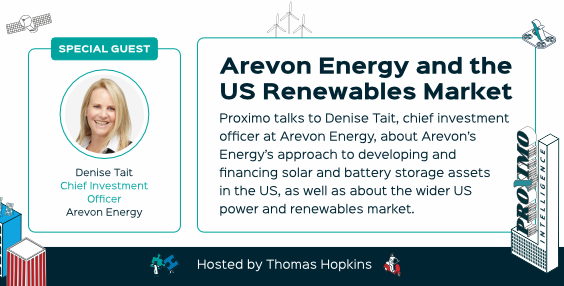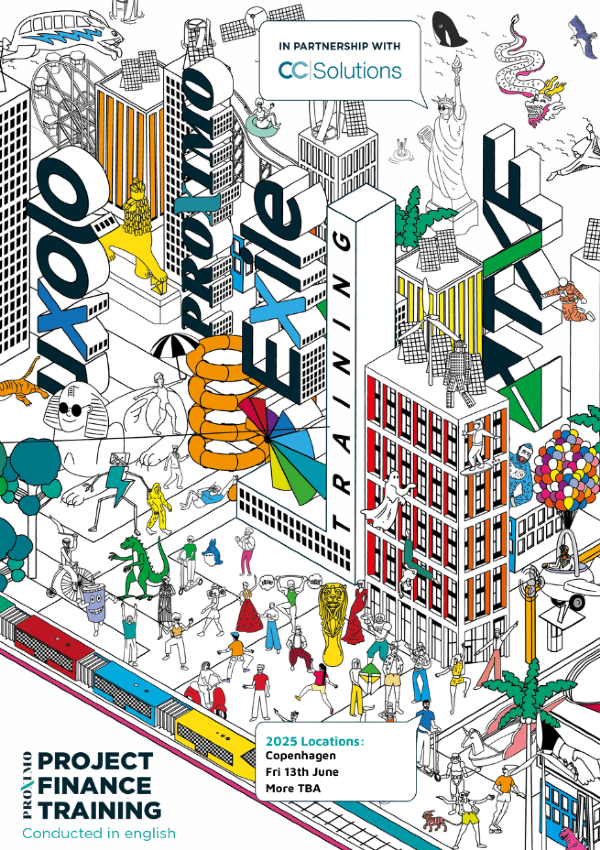Will 2024 be another year of record ECA support in project finance?
Fuelled by more project sponsor demand, ECA support for project finance smashed volume records in 2023. So what sectors do ECAs appear to have strong appetite for in 2024?

Project financiers have a love-hate relationship with ECAs. The long due diligence typical of ECAs and the juggling of the demands of multiple ECAs on major projects are headaches some project sponsors want to avoid, particularly when a speedy financial close is necessary to meet the timing requirements of a concession they have won. But with new technologies and markets emerging from the necessity for energy transition, supply chain pressures, increased project costs from inflation, higher interest rates having pushed up the cost of borrowing and heightened project risk globally – ECAs are getting more invites to the project finance party than they have at any time in the past decade.
Sponsor appetite for ECA support has upped significantly, so much so that last year ECA support volumes broke records. Proximo's sister publication TXF has recorded around $180 billion of export finance activity for 2023, up from $105 billion in 2022. This is an increase of more than 70% and marks the most active year on TXF’s database by some distance. ECAs offer a counter-cyclical product, so the drivers for this remarkable upsurge can be found in the problems that have reduced liquidity elsewhere.
2023 saw interest rates spiral to levels previously unseen in the 21st century. Inflation has pushed up the costs incurred by exporters and project developers, and financial institutions have been forced to adapt in order to spread risk efficiently. Traditional sources of funding have struggled to meet demand in this environment. However at the same stroke, appetite for debt financing remains strong.
In this context, many would no doubt welcome a fall in ECA volumes in 2024 if it was accompanied by less volatile market conditions. However, there are no guarantees that interest rates will fall significantly or that borrowers will be able to rely on alternative funding sources in 2024 – capital markets in particular have suffered over the previous 18 months.
The consequences of the OECD’s efforts to modernise its export finance package will continue to make themselves known over 2024. In particular, some have expressed concern over the decision to extend tenors to 22 years for green deals and 15 years for other sectors. The cost associated with increased tenors may yet discourage widespread uptake of the new financing terms, particularly in emerging markets.
That said, sectors, deal structures and tenor lengths have all evolved as new demands are placed on ECAs in light of geopolitical developments and the pressure of the energy transition.
What the numbers say
547 deals were recorded in 2023, up from 447 in 2022. This is a notable increase of 22% but it is also far more modest than the volumes suggested. While the industry was certainly productive in 2023, this shows that volumes were largely driven by bigger tickets. On the one hand, it is a reminder of the increasingly prominent role that ECAs play in supporting major project financing deals. On the other, inflationary pressures have most likely helped to exaggerate some of the gains made in overall volumes. Borrowers now require more debt than ever to cover costs and contingencies.
Should oil and gas finally be consigned to the past as a staple of the export finance industry? In 2023 the $3.1 billion Balikpapan refinery expansion deal made waves with the support of Kexim, K-Sure, SACE and US Exim but it stands as a rare example of a big-ticket fossil fuel transaction. Volumes of almost $19 billion over 26 transactions suggest that there is still a healthy pipeline in this space, even if ECAs are withdrawing from high-profile upstream projects.
The potential reputational damage associated with fossil fuels is now well-established in export finance. In 2024 ECAs will continue to face pressure from environmental campaigners to avoid controversial new projects like the East African Crude Oil Pipeline. And most recently the Biden administration has paused progress on the Calcasieu Pass 2 gas export hub in response to climate experts, who have described the project as a ‘carbon mega bomb’.
On the evidence of 2023, ECAs still have appetite for deals that facilitate business in the oil and gas industry. This includes deals for equipment and infrastructure like FPSOs. The petrochemicals industry has also benefitted from strong ECA support in 2023, with multi-billion dollar deals for Ras Laffan, Ineos’ Project ONE and Lotte Chemicals’ LINE project.
ECA involvement in the mining industry increased in 2023 as more countries looked to secure supplies of battery-grade metals. The POSCO salt lake lithium project in Argentina secured the support of K-Sure, and in 2024 expect to hear further updates on the Kachi lithium project, the Nouveau Monde graphite mine, the Mont Sorcier iron ore project and more besides.
However, it is not yet clear whether ECAs are willing to substantially up their commitments in the metals business. Metals and mining ranked as TXF’s seventh largest sector in the export finance industry in 2023. There is certainly room for growth, but at present ESG considerations have slowed the pipeline. The problem appears to be intractable – ECAs demand a high level of due diligence while the mining industry has long suffered from reputational issues and poor governance procedures.
This is not to say that mining deals are impossible. Rather, there is work to be done to show that ECAs can move beyond expressions of interest to provide a reliable source of alternative financing for the industry.
Trends to watch for
Watch out for the contrasting fortunes of green and social deals in 2024 – ECAs have made great strides in supporting low-carbon technology, but emerging market infrastructure is still a neglected space. The renewables market was powered by ongoing demand for wind in spite of rising costs, with major new deals for Baltic Power and Hai Long. The NEOM Green Hydrogen financing was a landmark moment for renewable fuels. Already 2024 has brought further pathfinder deals for H2 Green Steel and Northvolt’s battery gigafactory expansion.
The message from each of these projects is clear – ECA appetite for long-term commitments to transition projects employing relatively new technologies (deals that arguably on the cusp of commercial bankability) is strong, if the offtake for the projects is solid. And these pathfinder projects have established a template for others to follow: for example, the carmaker Stellantis is expected to announce a €3 billion gigafactory financing in the coming months with the support of Bpifrance and Euler Hermes.




